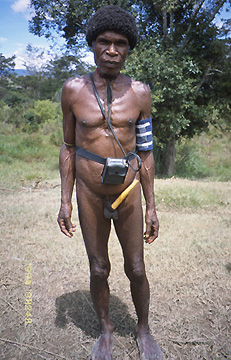| 5. Field Medicine and Horizontal Geography:Medicine as Area Studies The myth of aging is that “the elderlyare all identical,” whereas the maxim of gerontology is that, “people do becomedifferent as they age.” No matter whichrace or ethnic group we belong to, we become stooped, our hair grays, oureyesight and hearing fail and we tend to become more obstinate as we grow older.In terms of the biological aspects, we see common phenomena in aging in everyregion and every ethnic group in the world through our life cycle ofdevelopment, growth and aging. The myth that “the elderly are all identical” isan expression of this aspect of aging. From this point of view, people may beunique during early life or in the prime of life, but are doomed to becomecloser to each other as they grow older. On the otherhand, many studies about aging show that differences among individuals increaseas they age. Measurements of the organ functions of individuals show thataverage values decline in many cases with aging, but that the standarddeviation increases. In fact, when we look at people aged 85, we find some tobe really fit, but the majority require nursing care, and over half of those whowere born in that given year are no longer alive. The individual differencesamong the elderly make those in our infancy, adolescence or prime times lookinsignificant. Where do thesedifferences in aging among individuals come from? The genetic predisposition ofeach person is certainly relevant, but we cannot ignore the impact of lifestyle,which is closely connected to the natural environment and cultural background ofeach person. Various ethnic groups around the world live in their respectivenatural environment and their own historical and cultural backgrounds, which differfrom one to the other. How does the lifestyle of a certain locality influencediseases and aging? With a view to examining the impact on human aging of the naturalenvironment and cultural backgrounds, from a nosogeographical perspective, wehave conducted medical examinations for the elderly in many places throughoutthe world. Examinations of the elderly took place in Hunza and Karakorum inPakistan, the Andes in South America, Nepalese Himalayas, Yunnan in China, the ChineseTibetan Autonomous Region, Ulan Bator in Mongolia, the Hongcheon area in thesuburbs of Seoul, South Korea, Iriyan Jaya in Indonesia, and other region inSoutheast Asian countries. Through these studies we have been clearly shown therelativity and diversity of the elderly’s conditions. The method we adopted inthese examinations was exactly the same used to assess the elderly in Japan. Aswe conducted area comparisons of human aging on the basis of the Japaneseelderly, the characteristics of localities emerged dramatically.
MATSUBAYASHI Kozo
|
